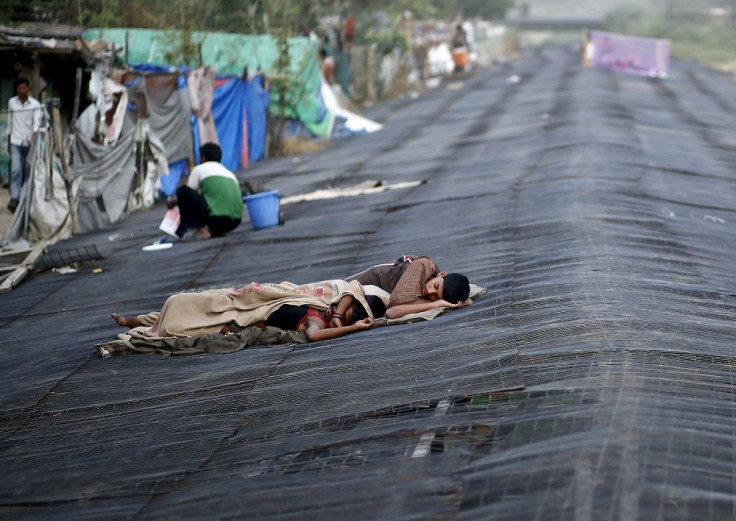Electricity Supply In India Due To Heatwave May Possibly Not Keep Up With Demand

A heat wave that struck India has killed hundreds of people in a span of seven days. A temperature of 50C is causing extreme heatwave in several parts of India. The fatalities are mostly people who cannot afford an air-conditioning unit and whose works are done outdoors, like construction workers, Think Progress reported.
“The state government has taken up education programs through television and other media to tell people not to venture into the outside without a cap, to drink water and other measures,” P. Tulsi Rani, special commissioner for disaster management in Andhra Pradeshi, was quoted as saying in the article.
“We have also requested NGOs and government organizations to open up drinking water camps so that water will be readily available for all the people in the towns,” Rani added.
However, the rise in electricity use of people in India who have air-conditioning unit could cause power blackouts. The article said that in 2012, there were 700 million people suffered from blackouts.
Extreme weather was blamed by scientists on global warming, and they pinpoint carbon emission contributing in temperatures. “Climate change includes not only changes in mean climate but also in weather extremes. For a few prominent heatwaves and heavy precipitation events a human contribution to their occurrence has been demonstrated,” a Nature Climate Change study stated.
Yusuke Satoh of the International Institute for Applied Systems Analysis said in an Eco Watch article that fossil fuel use would continue to affect weather patterns. “Under the notorious business-as-usual scenario − where nations ignore such warnings and just go on burning fossil fuels — 13 of 26 global regions would see “unprecedented hydrological drought levels” by 2050. Some would see this parching much earlier—the Mediterranean by 2027, and the western U.S. as early as 2017.”
Extreme weather can also be felt on the other side of the globe. Heavy rains have caused extensive flooding in Texas and Oklahoma, leaving 17 dead and 40 missing. The flooding is expected to continue in Texas because of the heavy rains, and is predicted to not go away for awhile, according to the US National Weather Service.
In India, the country is bracing for yet another extreme heat wave and the electricity supply might not be able to keep up with supply. The extreme heat may be a solution though with India being able to use renewable energy to improve the country’s power capacity.
Over the past decade, the clean energy industry has grown in scale and scope and is now operating in virtually every country. India, can also explore clean energy options to help support economic, environmental and energy security aims.
More than ever, solar power will be sought out and this will also increase demand for titanium dioxide, a key ingredient of solar panels. A mining company located in Chile, White Mountain Titanium Corporation (OTCQB: WMTM), is aiming to be one of Chile and the world’s leading titanium dioxide sources. It is currently developing a titanium deposit in the country. Its principal project is the Cerro Blanco property, a rutile-rich property situated in the Atacama region of Santiago.
To contact the writer, email: vittoriohernandez@yahoo.com






